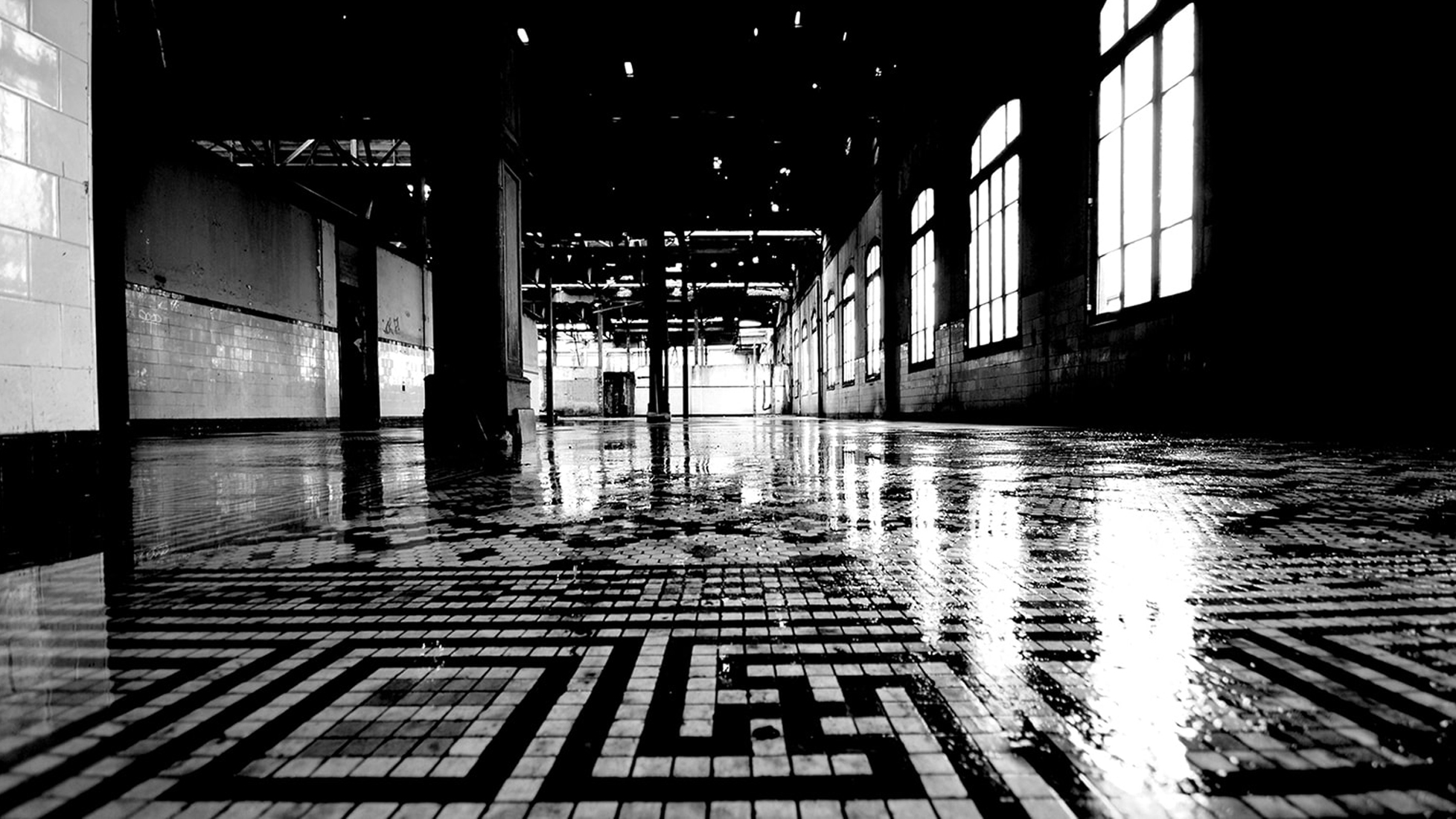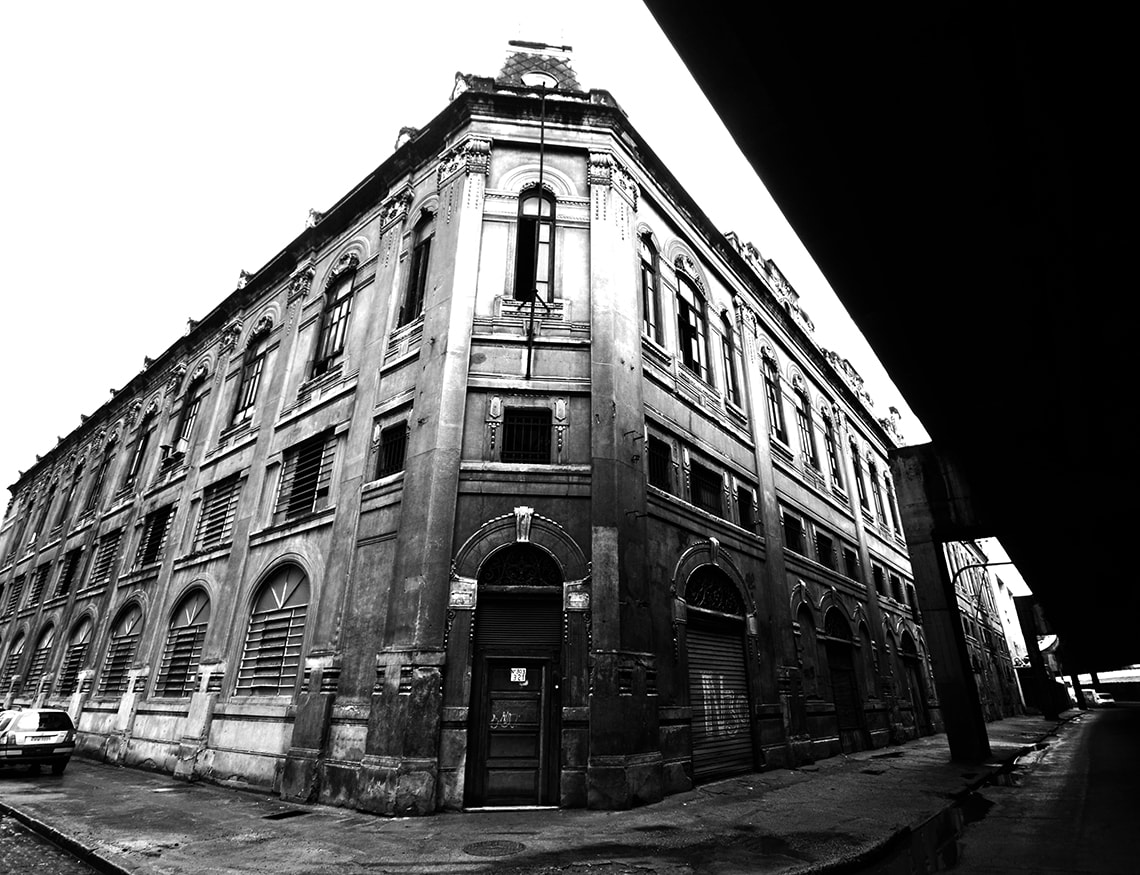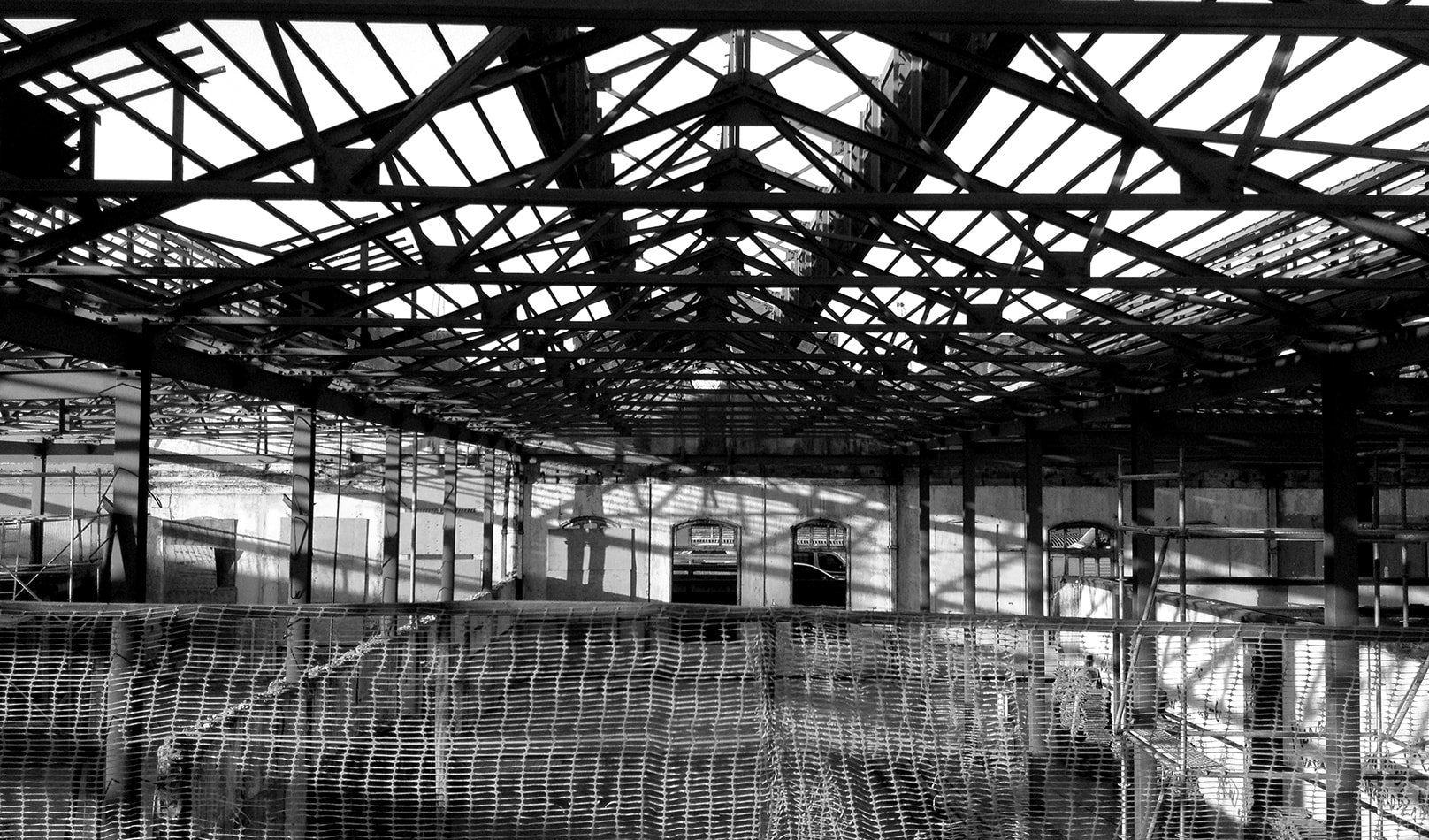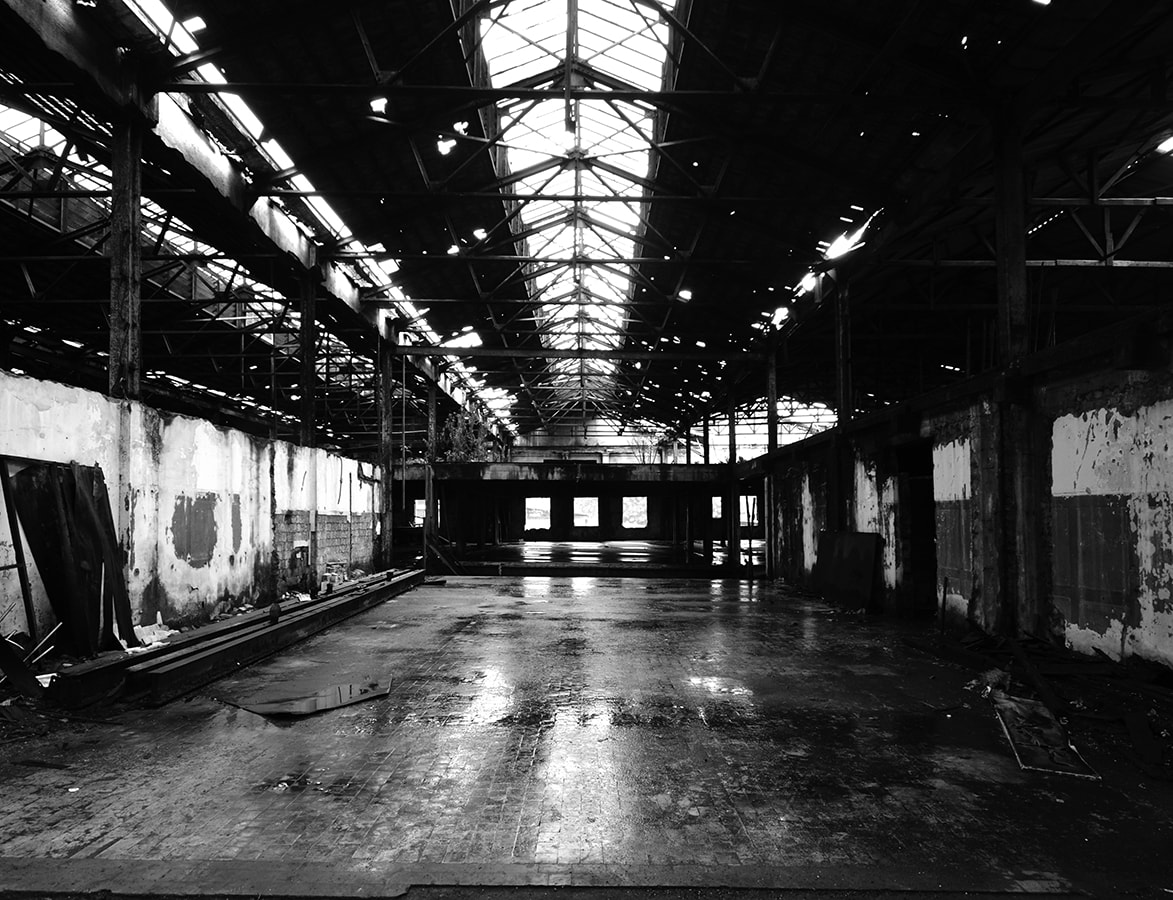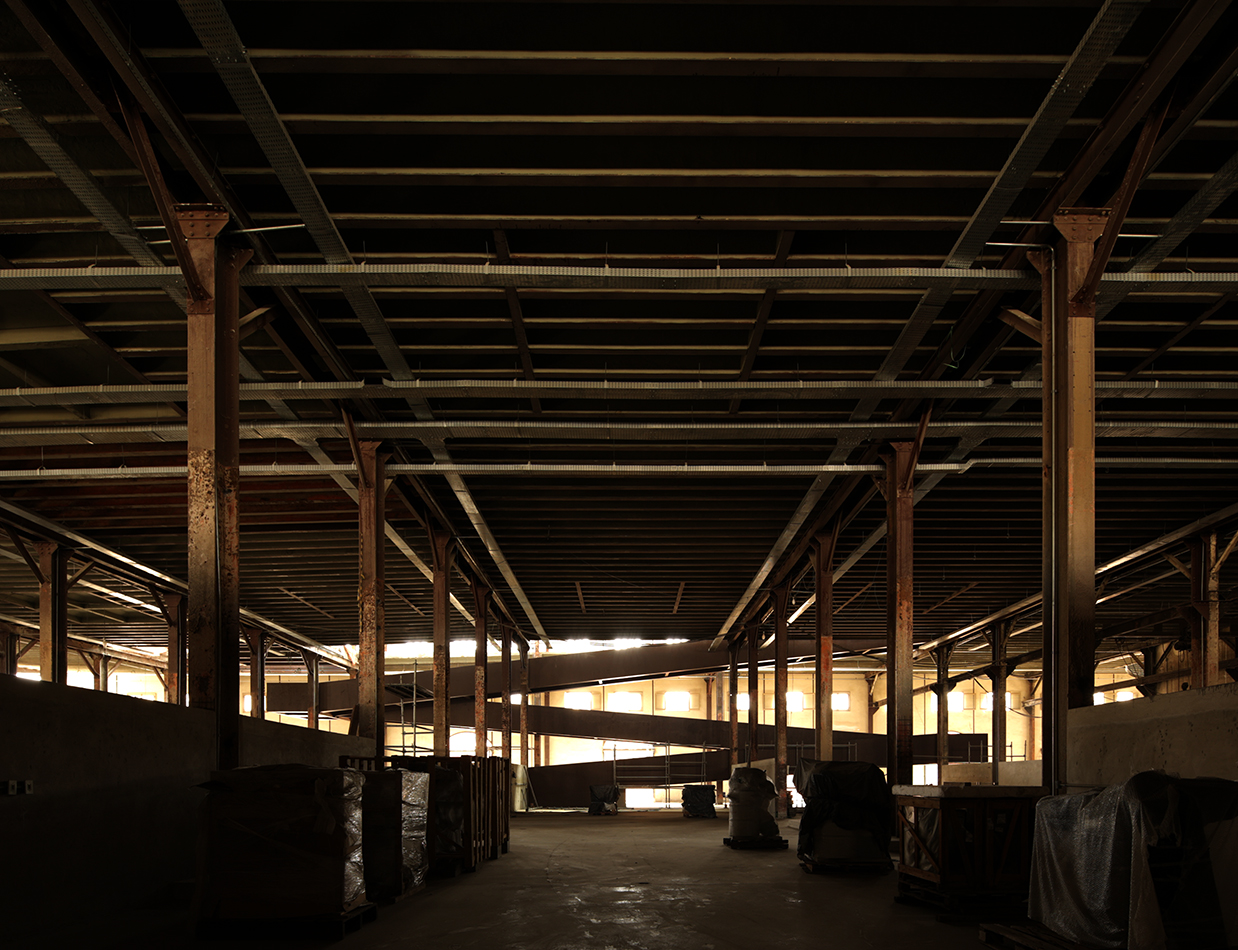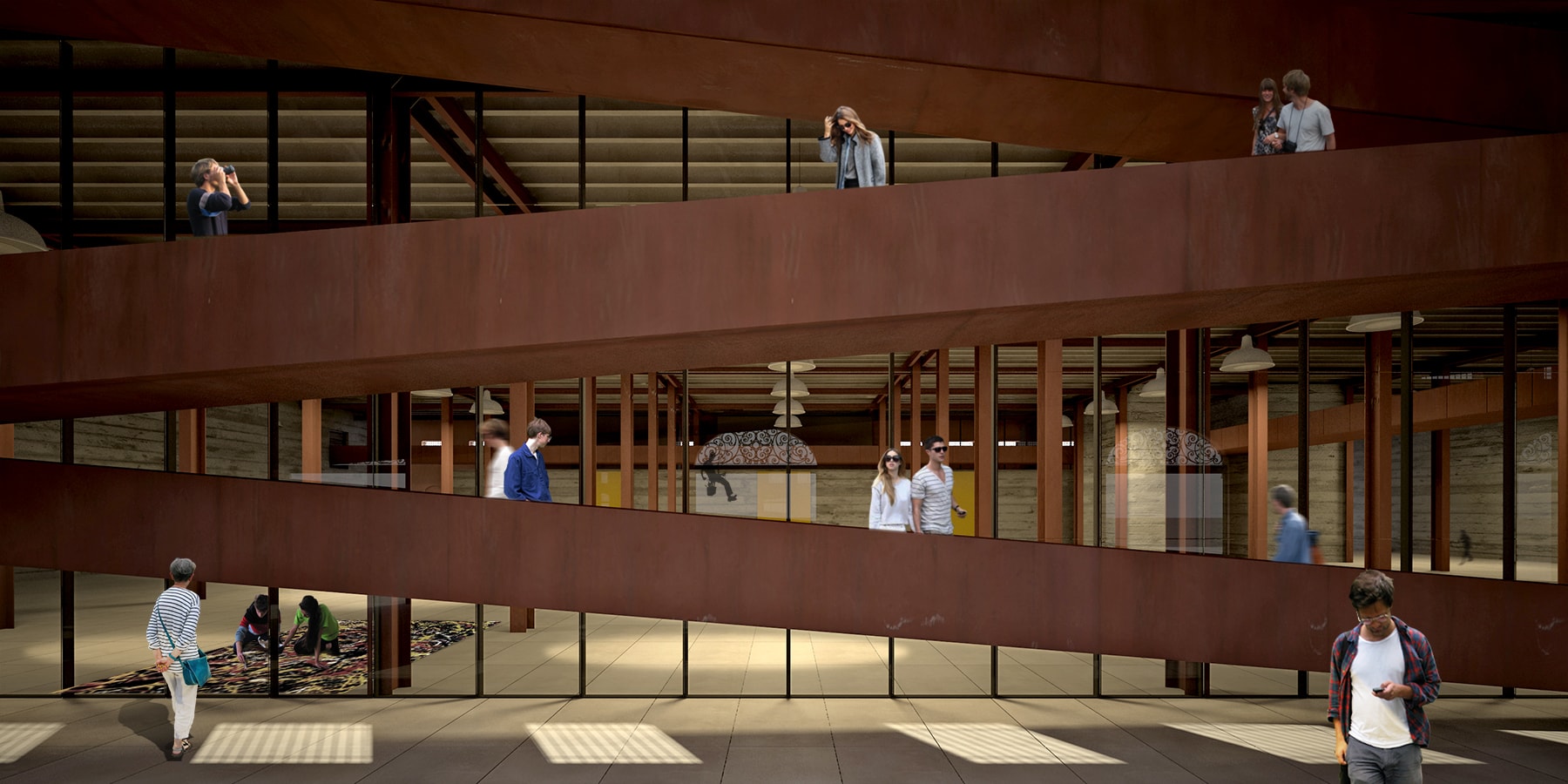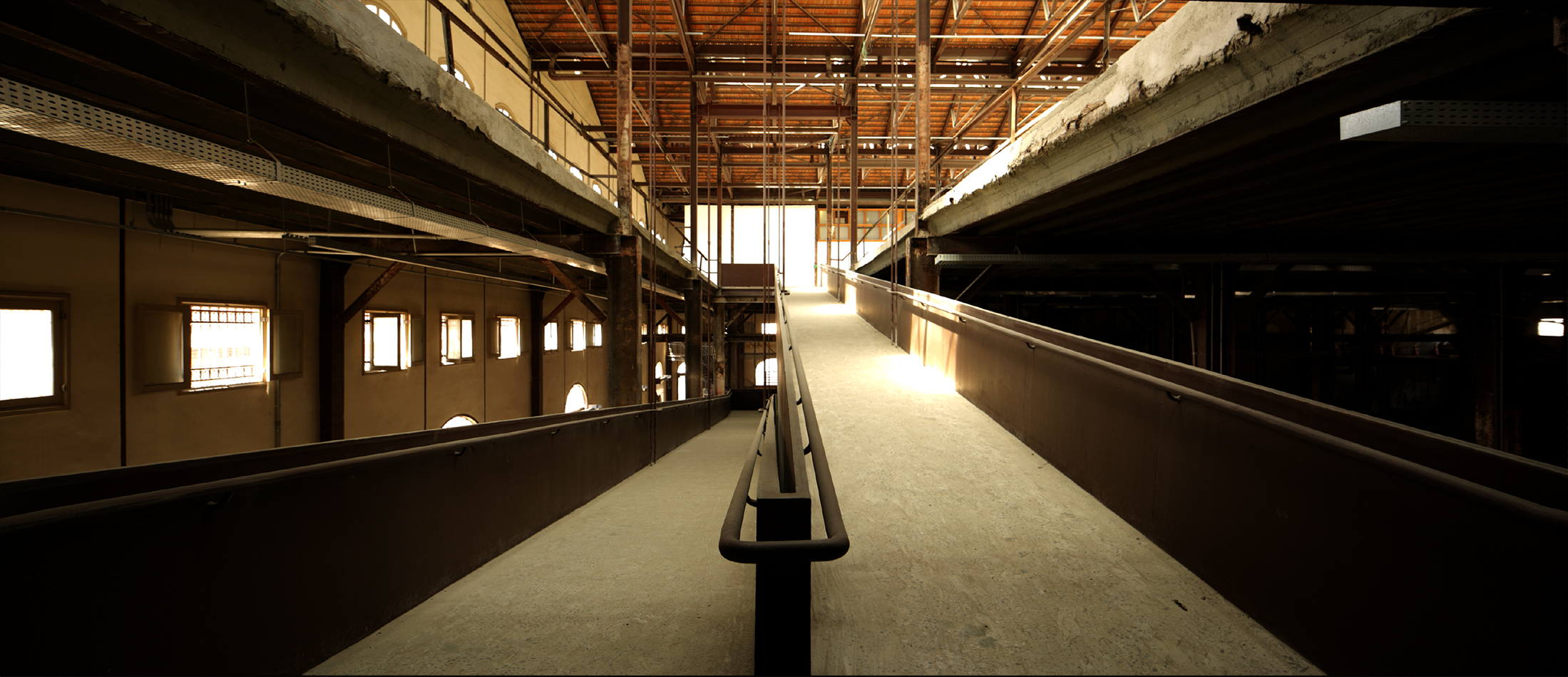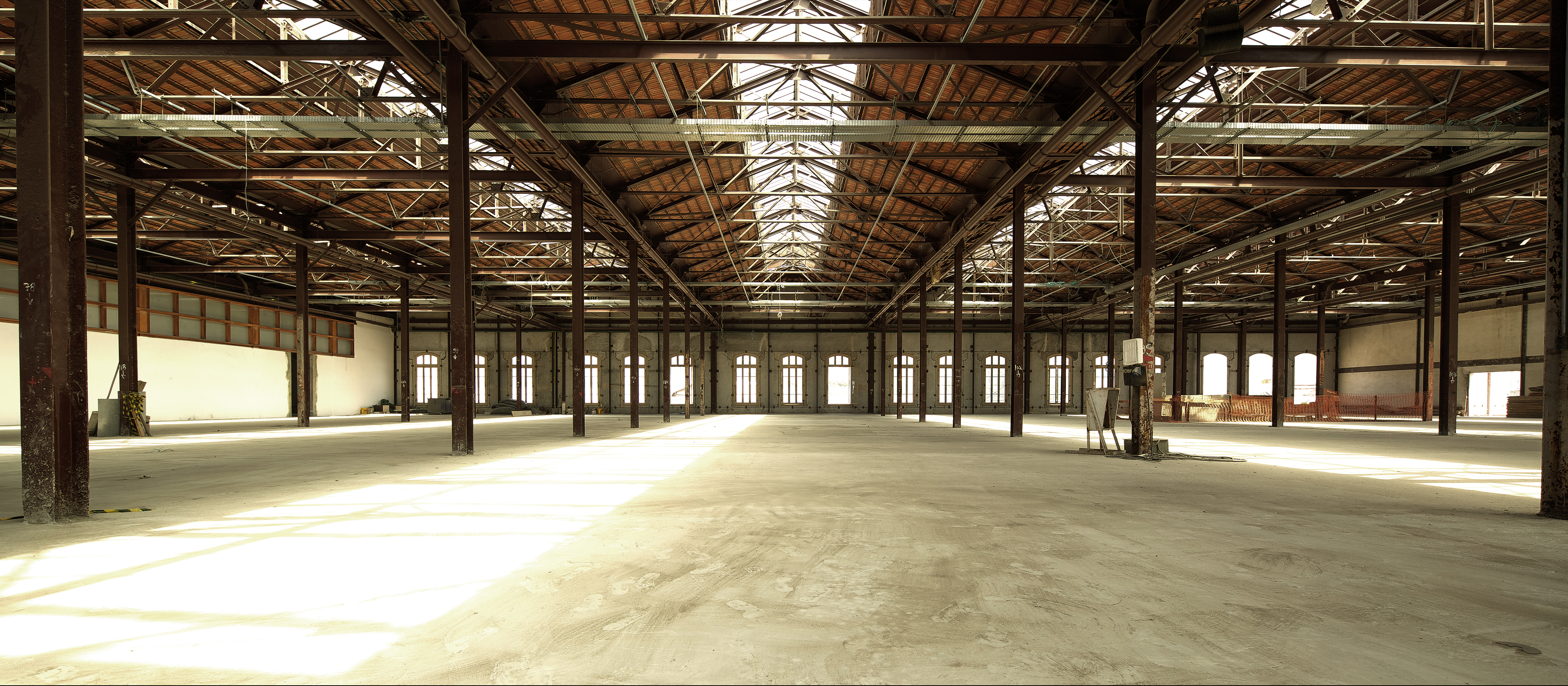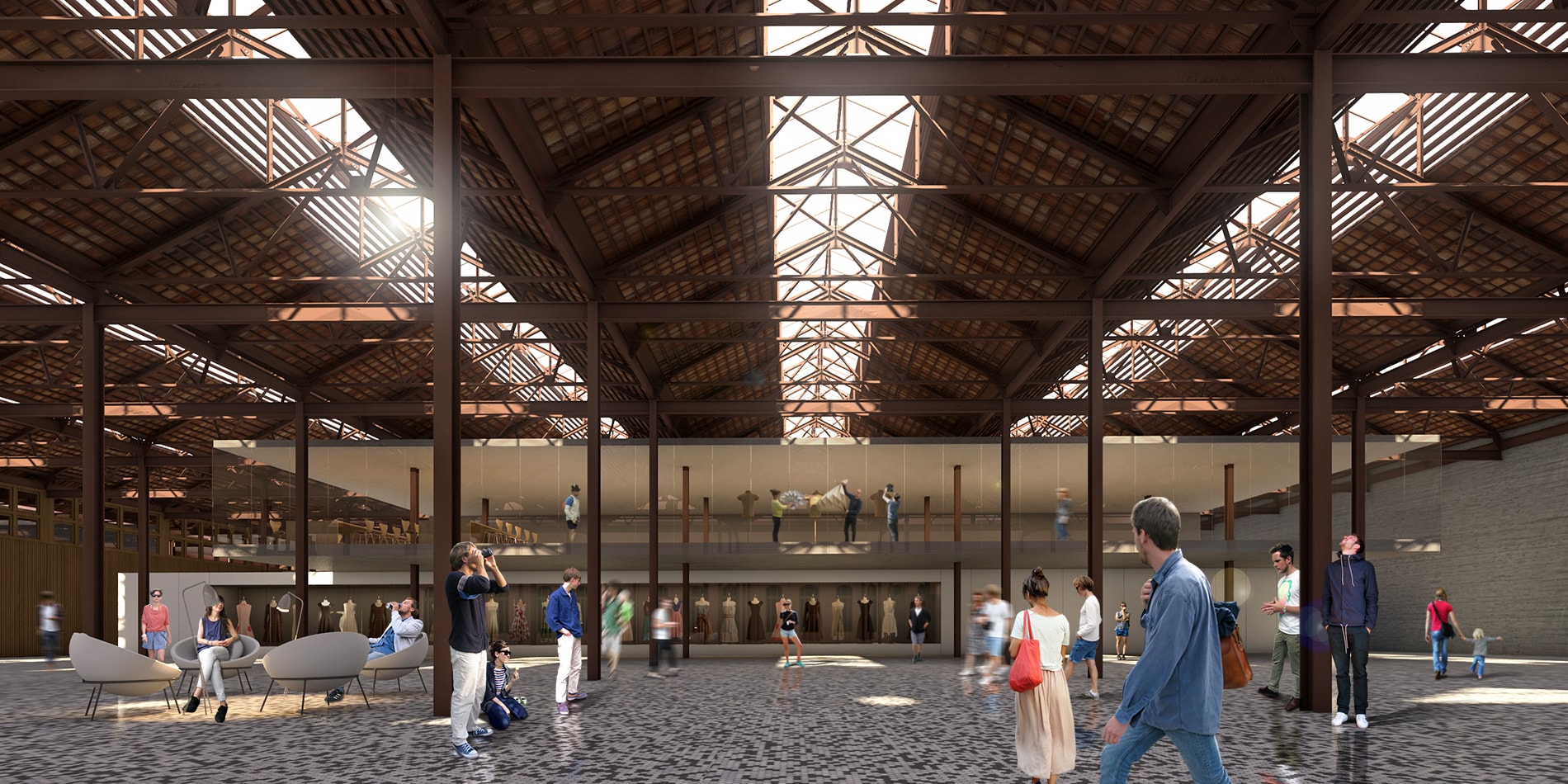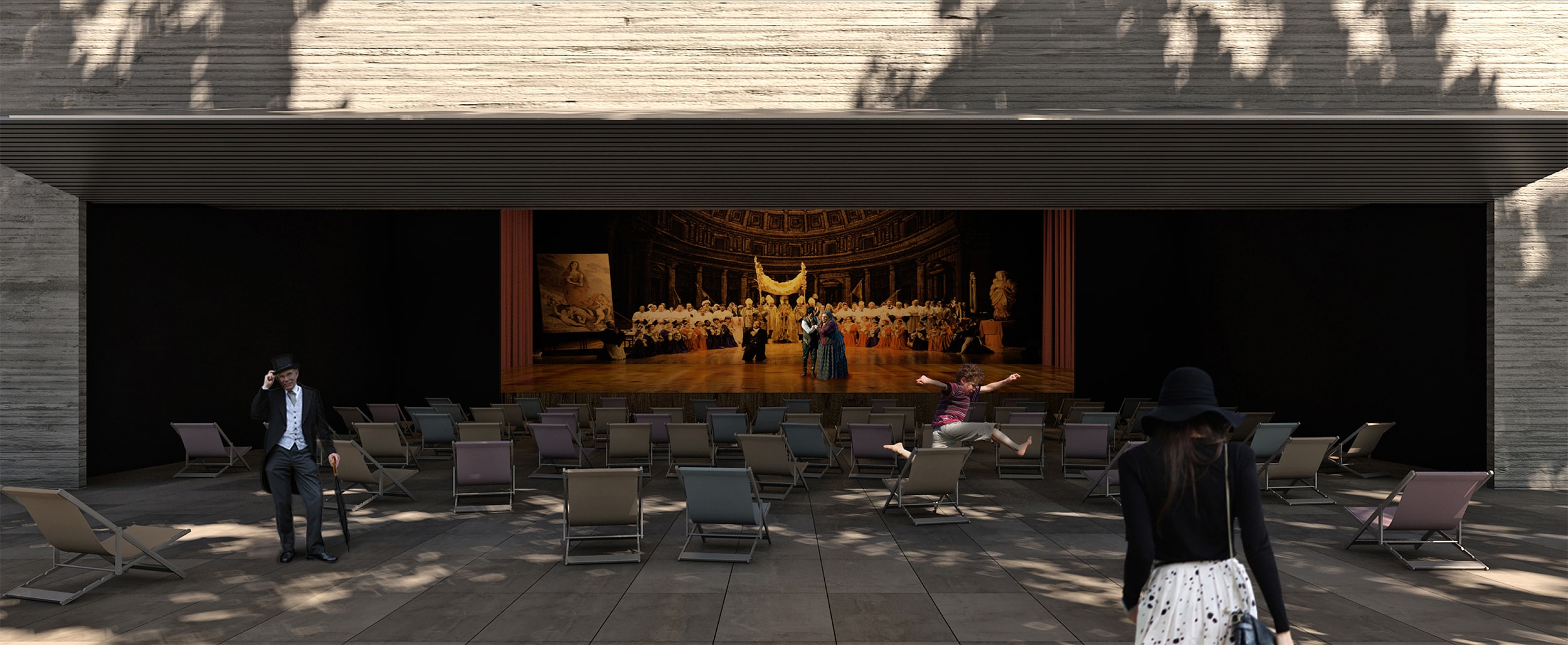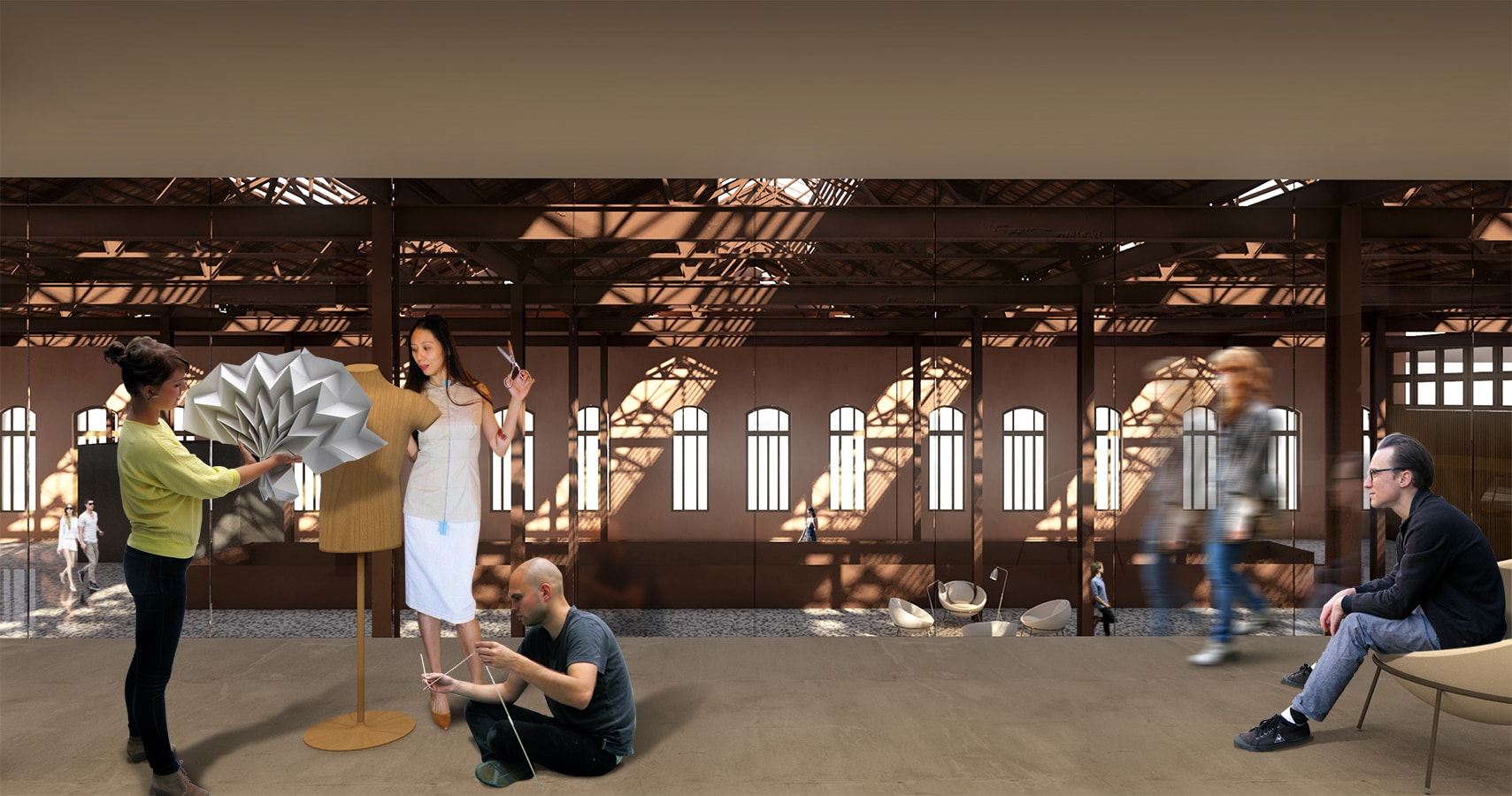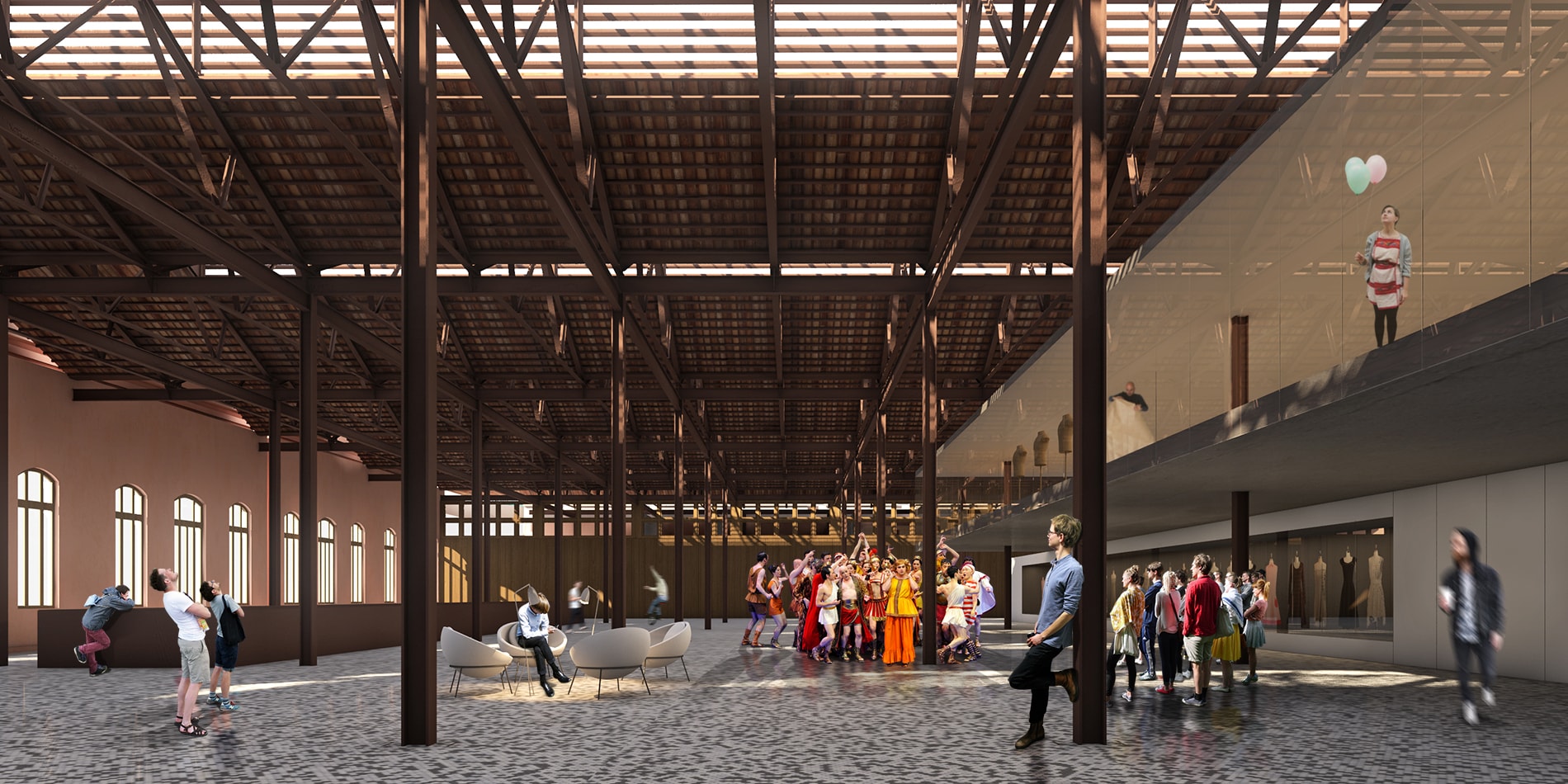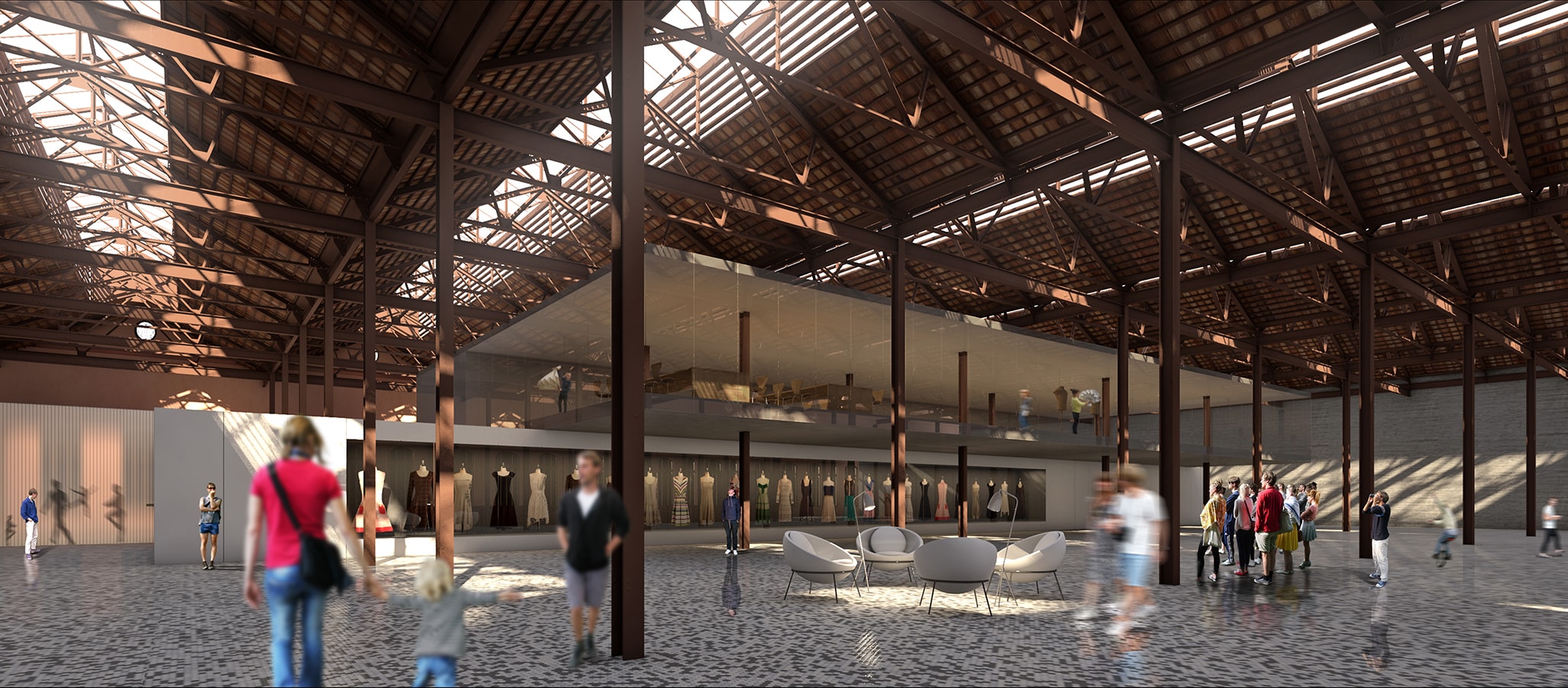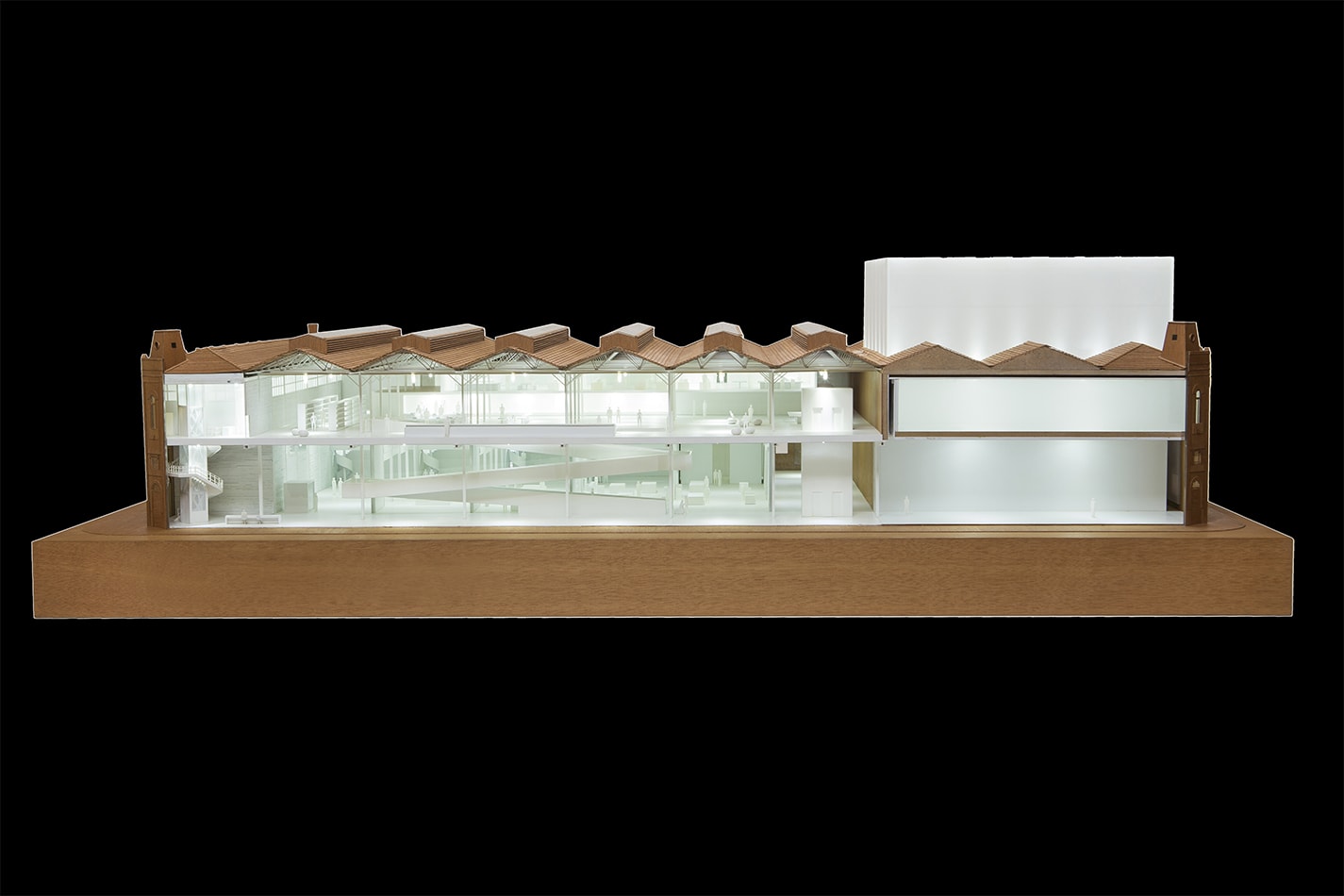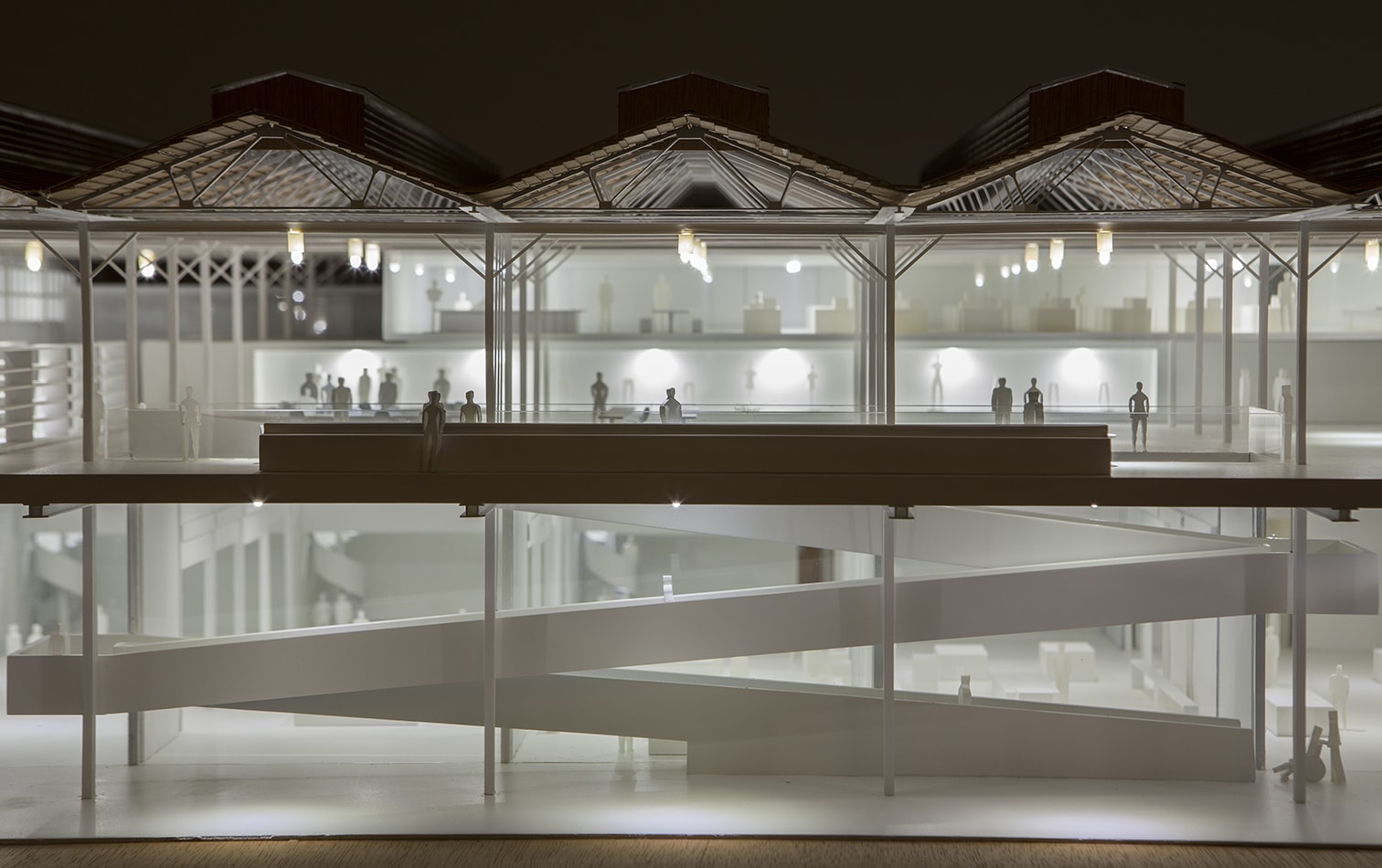An old industrial warehouse in the downtown center of Rio de Janeiro will shortly become a multi-use educational and cultural complex linked to the Municipal Theater.
The project, called Fábrica de espetáculos, is a retrofit of a 1918 industrial building which has been designated as a Historical Landmark. This intervention is part of the group of projects making up the Olympic Port which is remodeling the city for the 2016 sports event.
Three activities are undertaken in this same building: a school to graduate young Theater technicians (1), a production Center for the props and the elements making up the scenes of the plays (2) and the museum (3) – this last is for the visitor interested in knowing about the production and history of the institution.
The architectural project was then developed with a clear programmatic organization for the different activities and a division between the independent blocks and floors. While the northern front of Rodrigues Alves Avenue receives the general public; the eastern entrance on Antônio Laje Street functions as the everyday entrance for the building, including the students and employee-craftspersons. A future expansion is planned for the eastern side and will include a rehearsal for the elements produced at the Center.
Free access is obtained from the main entrance by a 10X66 meter-atrium from where the visitors can observe the production of the scenic elements. One can see the painting studio through transparent glass, as well as the cutting room, the mechanical and carpentry workshops and other props.
The visitors to the building are shown the know-how behind the curtains for each mounted production. From this space there is a ramp which creates an inner promenade which overlooks the production environment.
The circulation takes us to the third floor where there is a 60X27-meter covered square with a lounge, work tables, exhibit areas and coffee. Stairs and elevators make up a part of the vertical circulation for the program of the restricted area – the school and the studios.
Besides the studios on the ground floor, there are workshops on the first and fourth floor. Visible as well to the visitors is the manual process of production; the top floor is home to a sewing studio overlooking the public space on the third floor. As the main contemporary intervention, new prismatic-piled volumes dialogue with the warehouse without interfering with the existing beautiful roof structure.
The materials used, such as glass, exposed concrete, laminated panels and wood also create a differentiation between the architecture of a Historic Landmark with its original structure in steel and contemporary constructions.
Studio MK27
location > rio de janeiro . rj . brasil
project > november . 2011
-
architecture > studio mk27
architect > marcio kogan
co-architect > giovanni meirelles . lair reis
project team > andre costa . beatriz meyer . carlos costa . carolina bueno . carolina castroviejo . flavia maritan . luciana antunes
communication team > carlos costa . laura guedes . mariana simas
-
render > miguel muralha
An old industrial warehouse in the downtown center of Rio de Janeiro will shortly become a multi-use educational and cultural complex linked to the Municipal Theater.
The project, called Fábrica de espetáculos, is a retrofit of a 1918 industrial building which has been designated as a Historical Landmark. This intervention is part of the group of projects making up the Olympic Port which is remodeling the city for the 2016 sports event.
Three activities are undertaken in this same building: a school to graduate young Theater technicians (1), a production Center for the props and the elements making up the scenes of the plays (2) and the museum (3) – this last is for the visitor interested in knowing about the production and history of the institution.
The architectural project was then developed with a clear programmatic organization for the different activities and a division between the independent blocks and floors. While the northern front of Rodrigues Alves Avenue receives the general public; the eastern entrance on Antônio Laje Street functions as the everyday entrance for the building, including the students and employee-craftspersons. A future expansion is planned for the eastern side and will include a rehearsal for the elements produced at the Center.
Free access is obtained from the main entrance by a 10X66 meter-atrium from where the visitors can observe the production of the scenic elements. One can see the painting studio through transparent glass, as well as the cutting room, the mechanical and carpentry workshops and other props.
The visitors to the building are shown the know-how behind the curtains for each mounted production. From this space there is a ramp which creates an inner promenade which overlooks the production environment.
The circulation takes us to the third floor where there is a 60X27-meter covered square with a lounge, work tables, exhibit areas and coffee. Stairs and elevators make up a part of the vertical circulation for the program of the restricted area – the school and the studios.
Besides the studios on the ground floor, there are workshops on the first and fourth floor. Visible as well to the visitors is the manual process of production; the top floor is home to a sewing studio overlooking the public space on the third floor. As the main contemporary intervention, new prismatic-piled volumes dialogue with the warehouse without interfering with the existing beautiful roof structure.
The materials used, such as glass, exposed concrete, laminated panels and wood also create a differentiation between the architecture of a Historic Landmark with its original structure in steel and contemporary constructions.
Studio MK27





